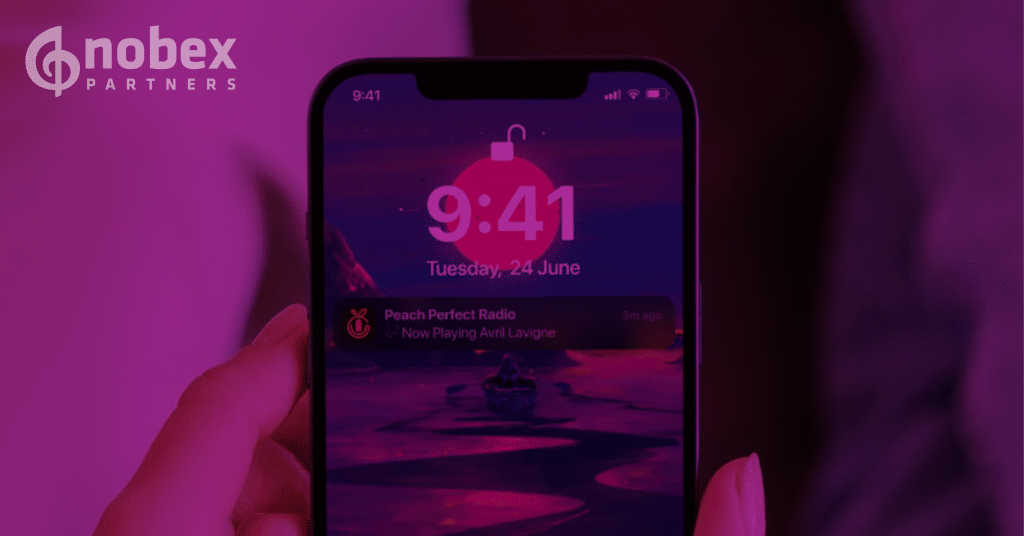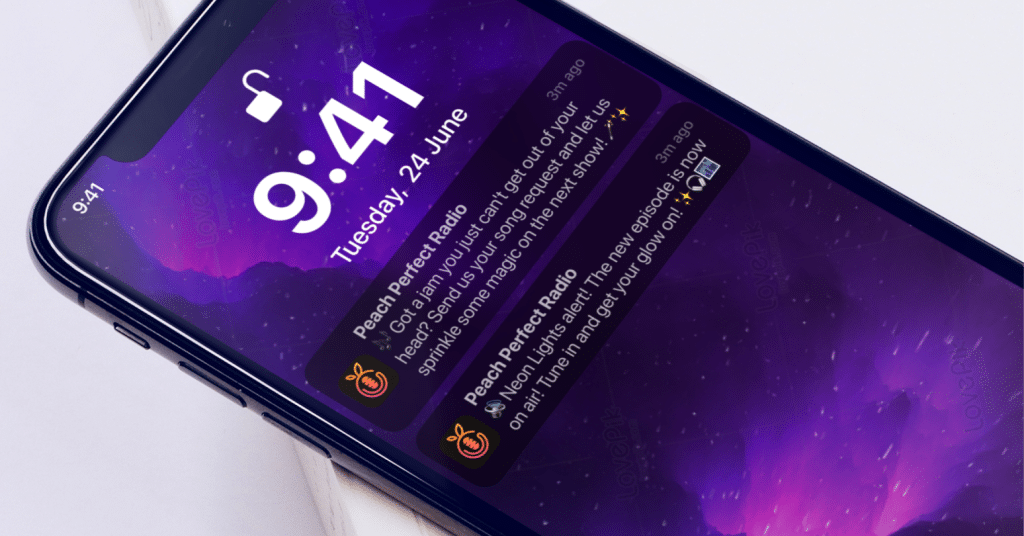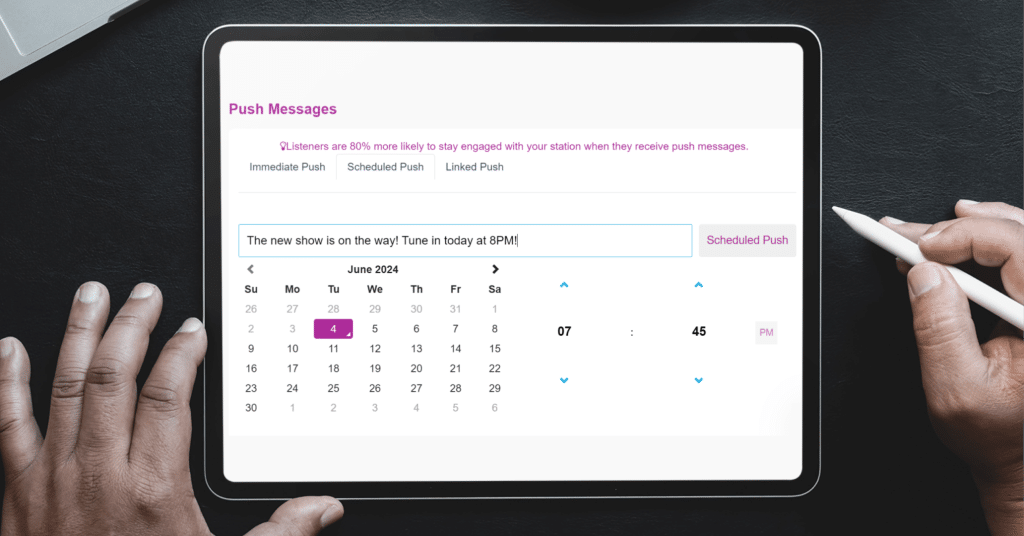
Push notifications are a powerful tool for keeping your audience engaged and encouraging regular app usage, but they need to be crafted carefully to avoid being ignored.
In our previous blogpost, we explored the technical setup of push notifications and how they can be seamlessly integrated into your app. Now, it’s time to focus on what makes a notification effective — how to craft messages that get noticed and drive listener engagement.
Understanding the Purpose of Push Notifications
Push notifications can serve various purposes, from promoting content to sending reminders and offering exclusive updates. Their primary function is to keep your audience engaged, making your app an essential part of their daily routine. Notifications can drive app usage by prompting listeners to check out live shows, upcoming events, or freshly released content. For example, you can use notifications to alert users about a scheduled interview with a notable guest, or a newly uploaded episode of their favorite podcast.
The key to effective push notifications is finding the right balance between frequency and relevance. Bombarding users with notifications might lead to frustration and app uninstalls, while sending too few might cause your listeners to miss out on important content. It’s about crafting a strategy that resonates with your audience’s interests and preferences. Generally, notifications fall into three main categories: content-driven, promotional, and interactive. Each type serves a distinct purpose, and it’s crucial to know which is best suited for your message:
- Content-driven notifications are all about highlighting specific shows, episodes, or articles, promoting unique content that stands out.
- Promotional notifications can spotlight special offers, events, or upcoming features that you want to promote heavily
- Interactive notifications encourage listener participation, like polls or live voting during a broadcast, providing a way for your audience to engage more directly with your station.

Crafting Compelling Messages
A compelling push notification requires a careful balance of clarity and intrigue. The key is to keep the message concise — around 50 characters if possible — so it’s easily digestible and doesn’t overwhelm the reader. Short, punchy sentences work best, cutting straight to the point while maintaining a sense of urgency. Actionable language is essential; phrases like “Listen now!” or “Catch this exclusive content!” create a direct call to action that prompts immediate response.
Adding personality to your messages can make them stand out in a crowded notification bar. Consider using emojis to break up text and add a visual flair, helping your notifications feel more friendly and approachable. However, it’s important not to overuse them, as they should enhance the message, not distract from it. Clarity should always be the priority—make sure your audience knows exactly what you’re offering them in just a few words.
Timing is Everything
Timing is one of the most critical factors in the success of a push notification. Knowing when to send notifications ensures that they reach your audience at the moment they’re most likely to engage. This requires understanding listener behavior — analyzing when your app sees the most traffic and identifying peak usage times can provide valuable insights. Notifications sent just before a live broadcast or during prime engagement hours are more likely to catch attention and drive action.
Strategically timing notifications for special broadcasts, events, or new content can build anticipation among your audience. Reminding listeners of an upcoming show or sending a quick notification when new content goes live, can make sure they don’t miss out. Consistency is key; developing a routine for sending notifications helps your audience know what to expect and when, making them more likely to look out for your messages.

By following these guidelines, you can avoid common pitfalls and make your app’s notifications a key driver of audience engagement. Push notifications aren’t just about sending messages — they’re about creating meaningful connections with your listeners. Use them wisely, and your app can become a vital part of your audience’s daily routine, enhancing their listening experience and your station’s reach.
